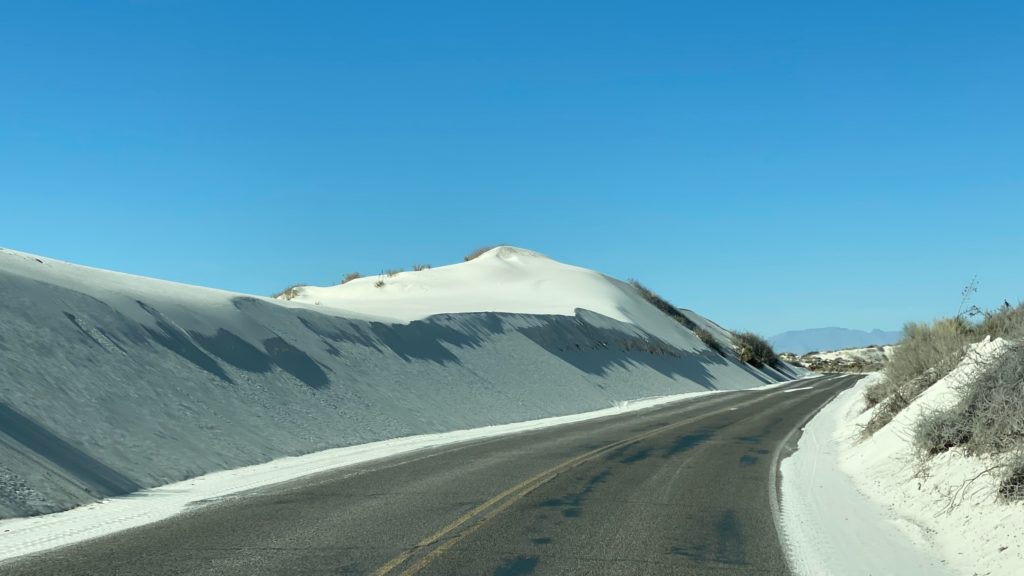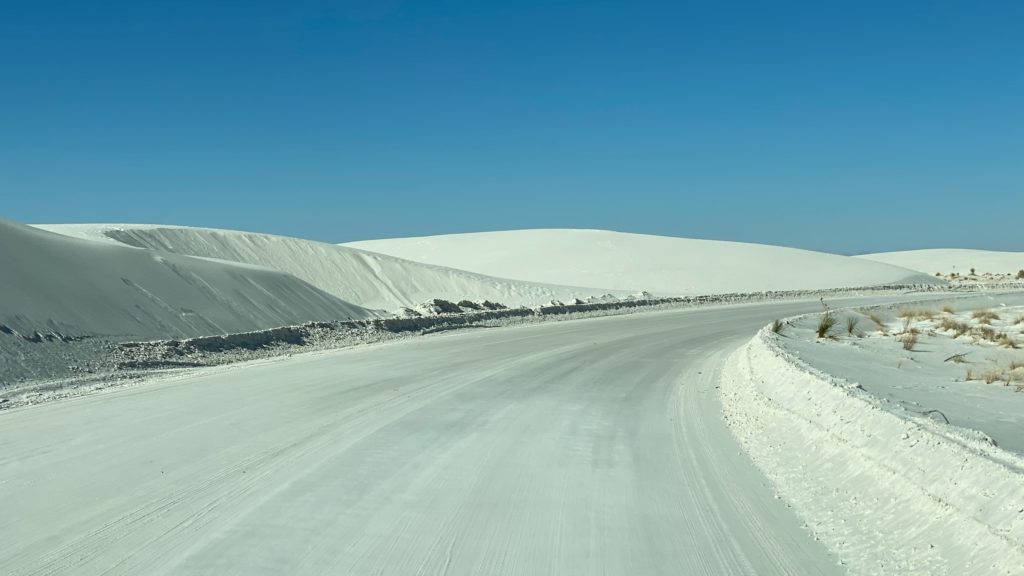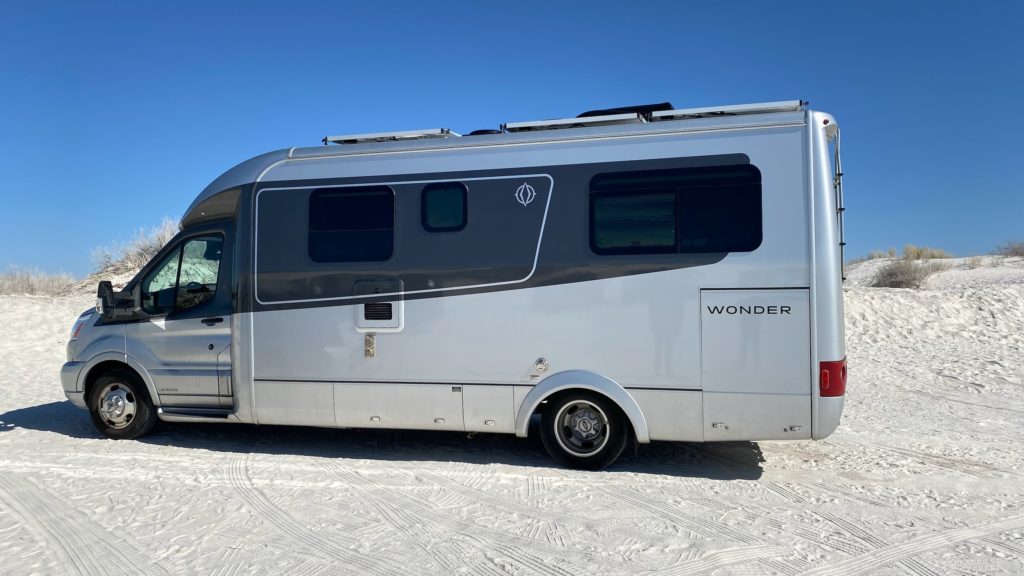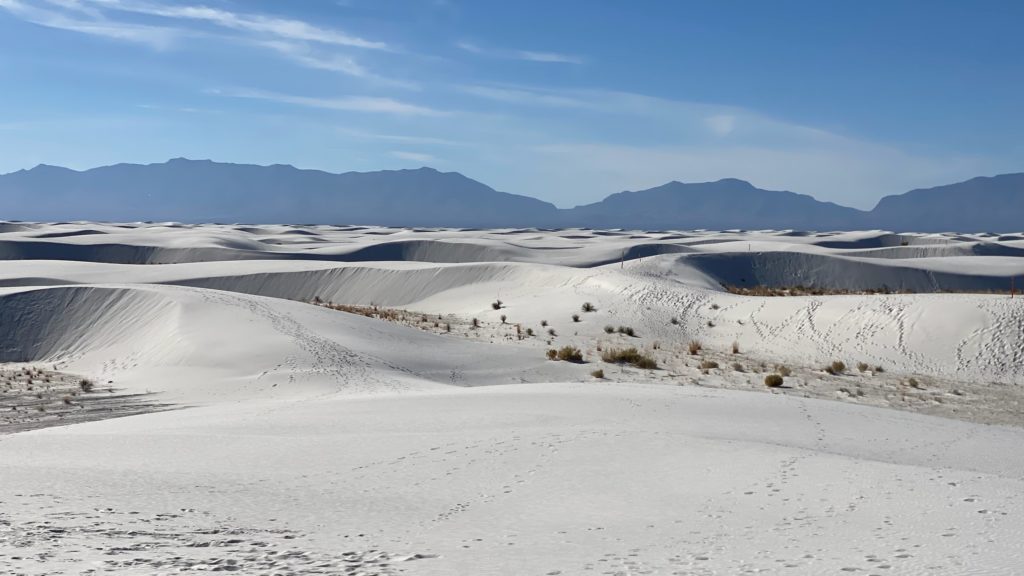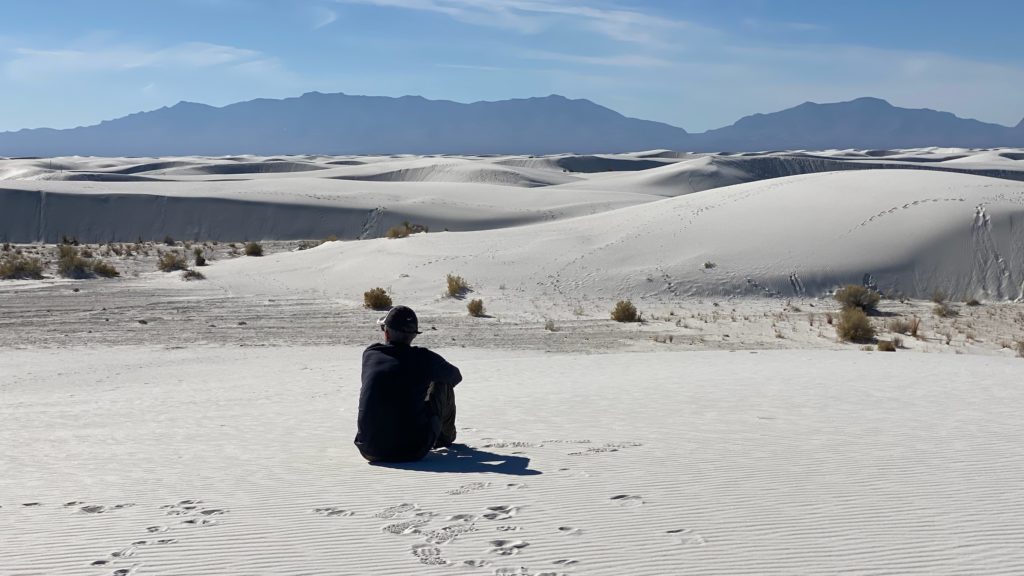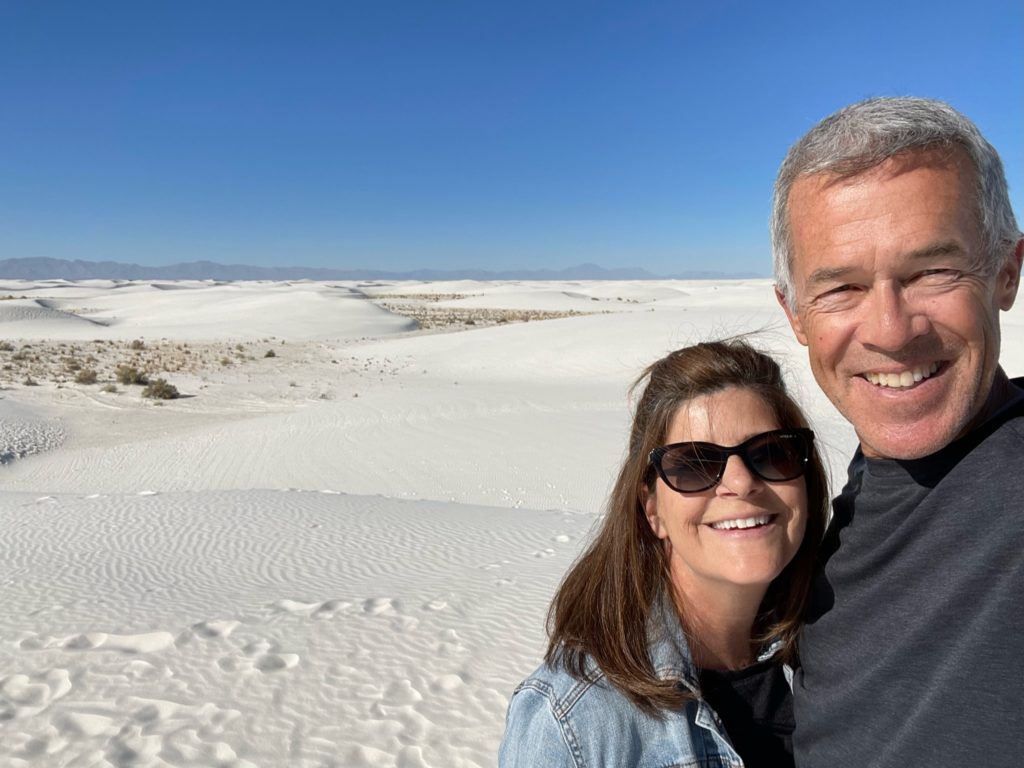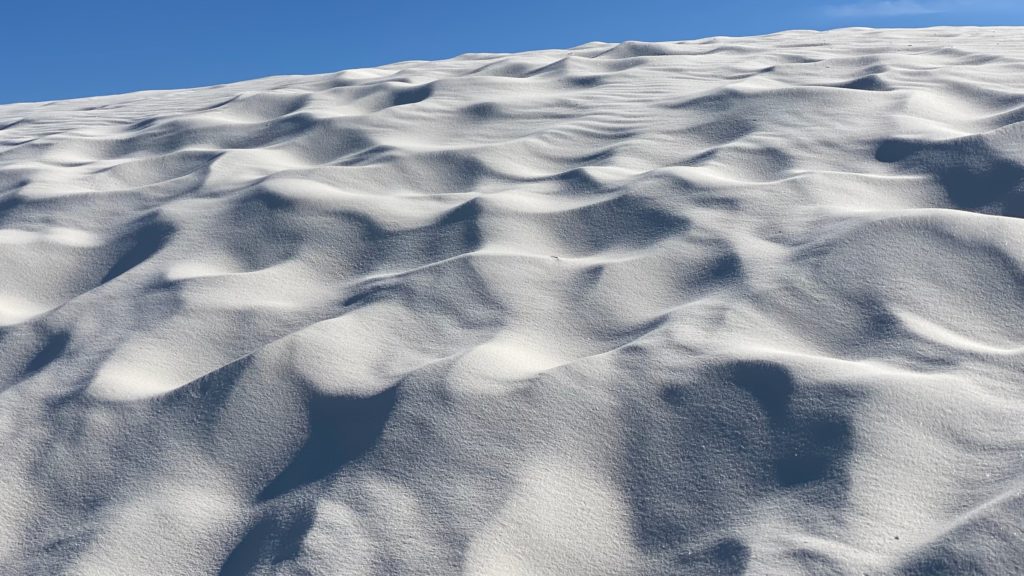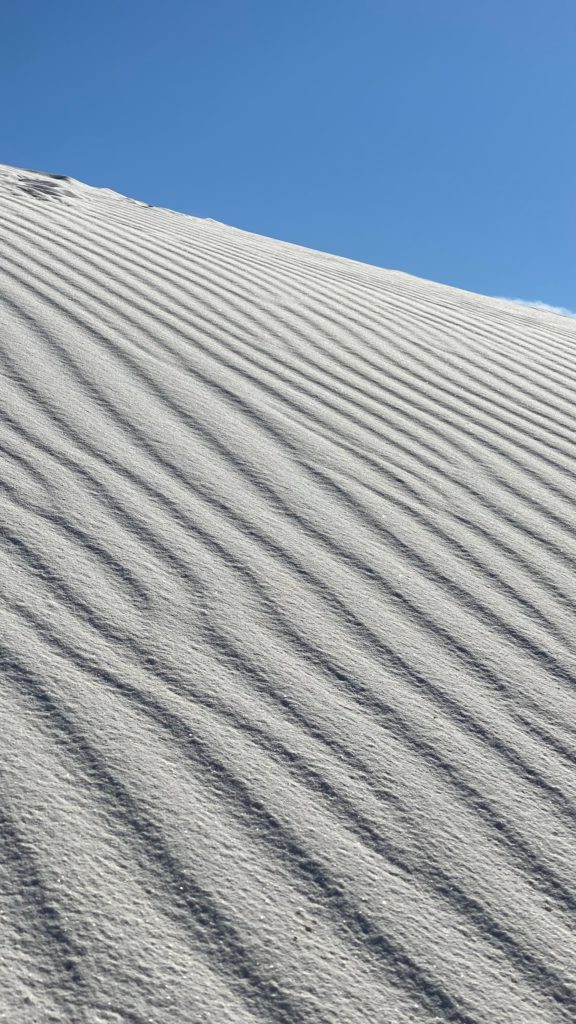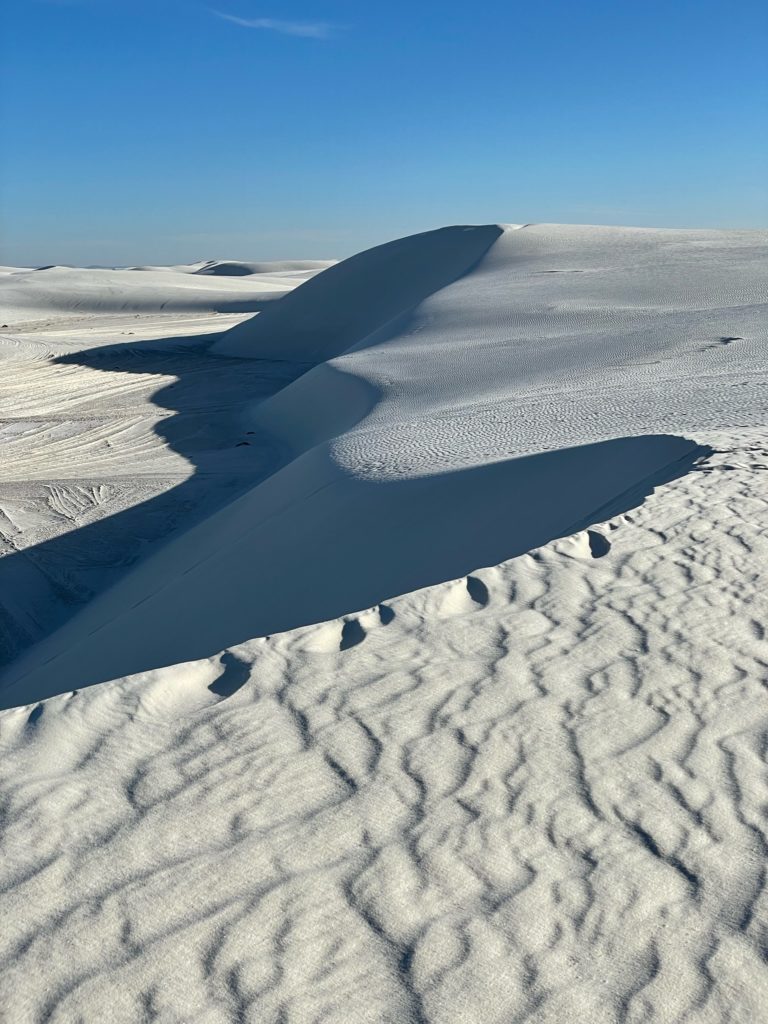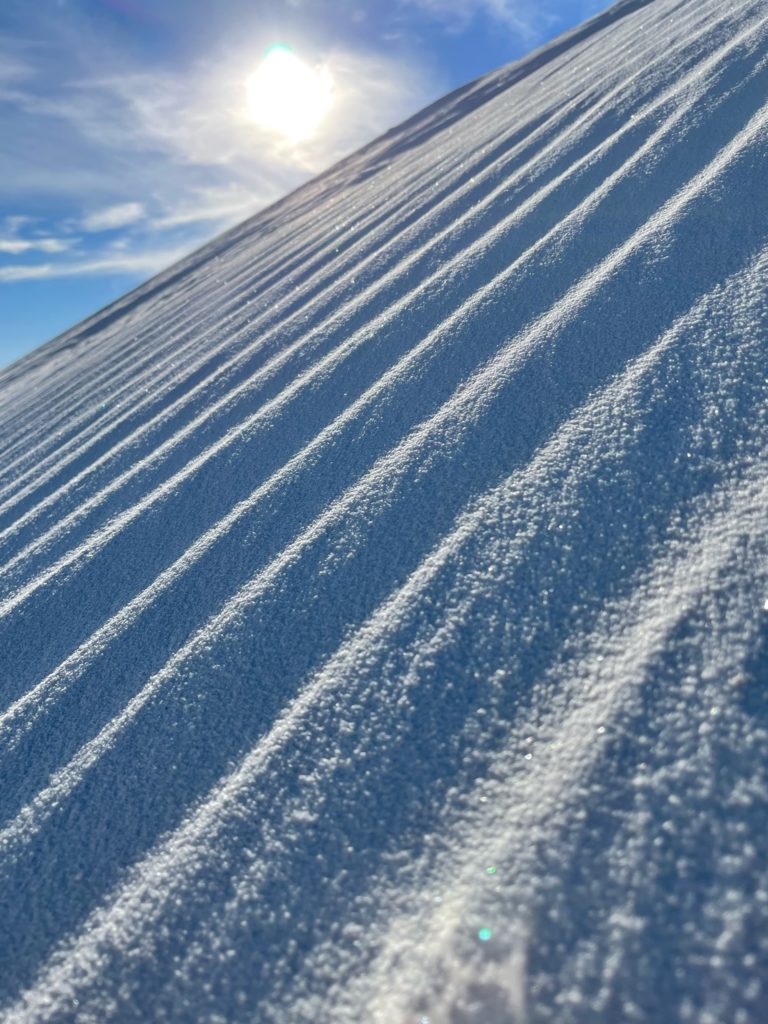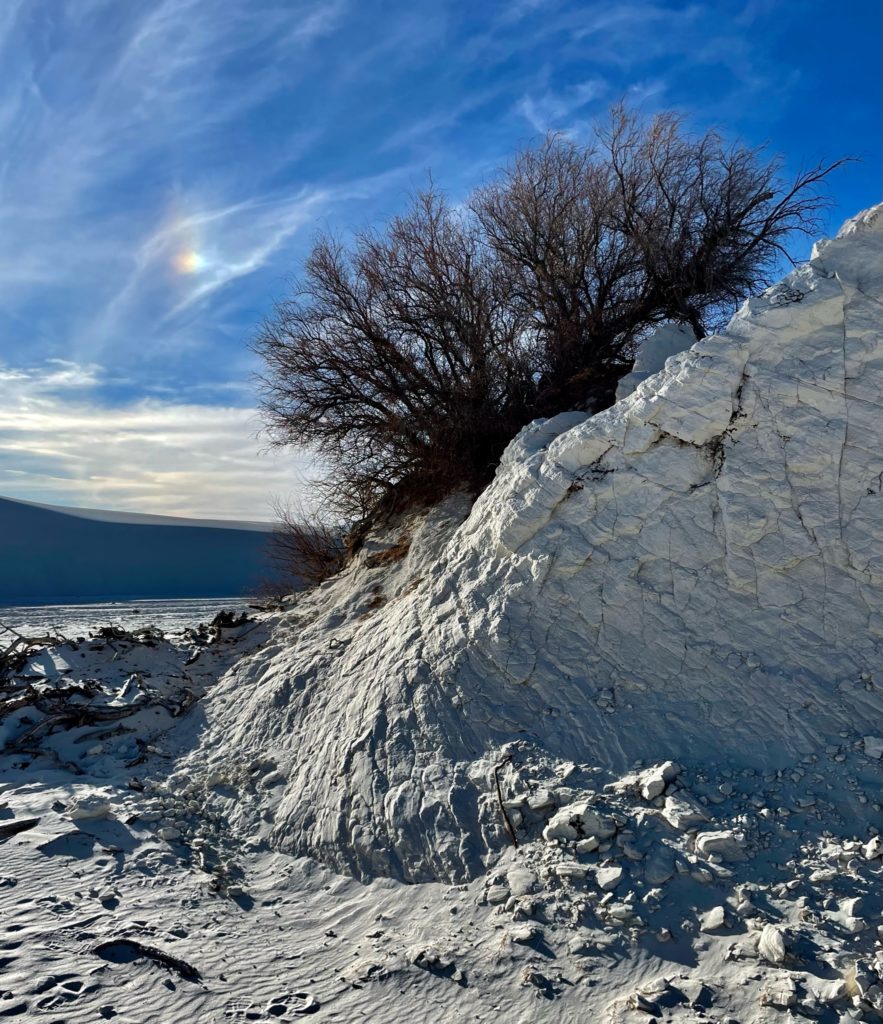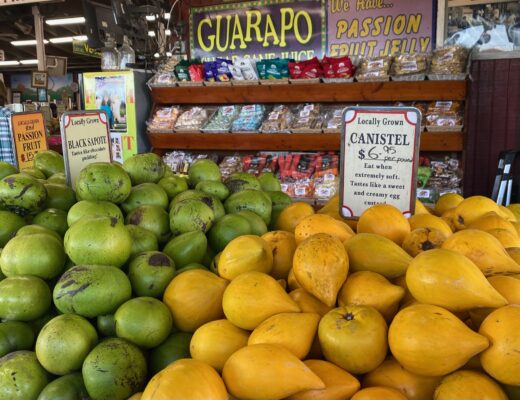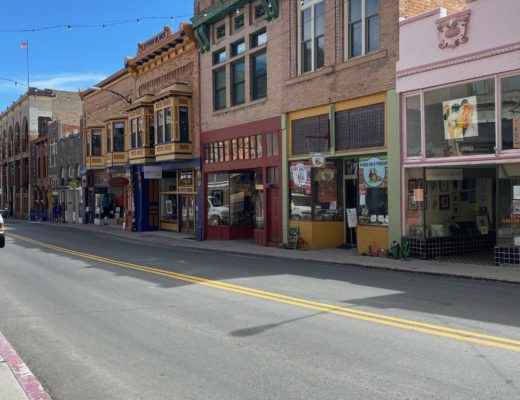If you’re seeking sunshine in the winter, look no further than White Sands National Park in New Mexico. They claim clear, sunny skies approximately 330 days out of the year, so your chances are good, really good!
Despite this, no matter what time of year you arrive, you’ll feel like you’re in a winter wonderland until you step outside into the warm weather. Why? Because the dunes and berms of white “sands” lining the road are actually pulverized gypsum and its stark white color and texture gives every appearance of snow. Gypsum is the main component of sheetrock. Another similarity to a snow area – there’s an actual snowplow/grader that the park service always keeps on hand to keep the scenic drive clear of the drifts of gypsum that will completely block the road through the dunes after an overnight windstorm.
Gypsum (unlike the silica that we call sand) is
- Water soluble so it will go into solution like sugar or salt when the monsoons and rains hit the area. What makes White Sands the largest gypsum deposit in the world is the fact that the Tularosa Basin has no outlet to water of any kind so the gypsum sand dunes stay in the area, simply shifted about by the rain and wind.
- Doesn’t absorb heat like silica so, even on the hottest days, it’s still cool and comfortable (at least on the feet) to walk on the dunes.
- Doesn’t “give” like sand. Falling is more like hitting a sheetrock wall. Doug and I threw our hands in the air at the top of a gypsum hill and windmilled down it. My lack of coordination struck again but instead of just a face full of sand at the bottom, I hit pretty hard slamming my left rib cage and right jaw…go figure! Hurt my ego pretty bad.
White Sands National Park is 275 sq. miles of this fine grain material in sand dune formations. It’s mesmerizing and uniquely beautiful. The drive through White Sands is a mere 8-mile out-and-back. Tent camping out in the dunes requires special permits, but hiking the dunes is definitely allowed and should not be missed.
Four other unusual things about the area
- In the late 60’s / early 70s African oryx, a species of large antelope, was set free in the area and they have thrived. You’ll know it, if you see one!
- The area is surrounded by the White Sands Missile Range and sometimes the park closes for testing so always check their schedule to make sure they’re open. The areas immediately adjacent to the park even have “keep out” signs warning of the potential danger of unexploded ordinance.
- The evolution of plants and animals that survive in this area is fascinating (like nearly albino lizards that through natural selection are the ones that can hide, survive and reproduce) so the visitor center is a must-see on your way in.
- Rangers host sunset strolls, moonlight walks, and sunrise photography tours so check the visitor center if you want to spend additional time here.
If you aren’t going to stay in Las Cruces or Alamagordo, there is a small boondocking location just north of the park that ranks amongst the more unusual places that we’ve stayed. For one thing, it’s technically on the grounds of the Holloman Air Force Base and you park adjacent to their “wastewater evaporation ponds”. It must have been a different type of wastewater because there was no odor and a lot of waterfowl but I will say it was a bit disconcerting. Another feature of this unique boondocking spot was the ringside view of the military aircraft on training sorties from the nearby runway with their “Top Gun” departures and high speed passes – even including a few sonic booms! , And finally, it proved to be a great spot from which to view a pretty sunset and sunrise the next morning over this very unique area in the deserts of New Mexico.
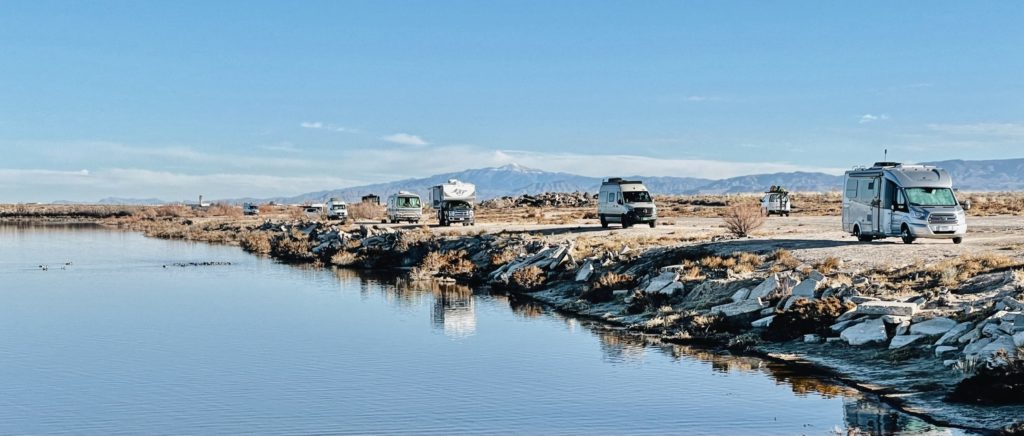
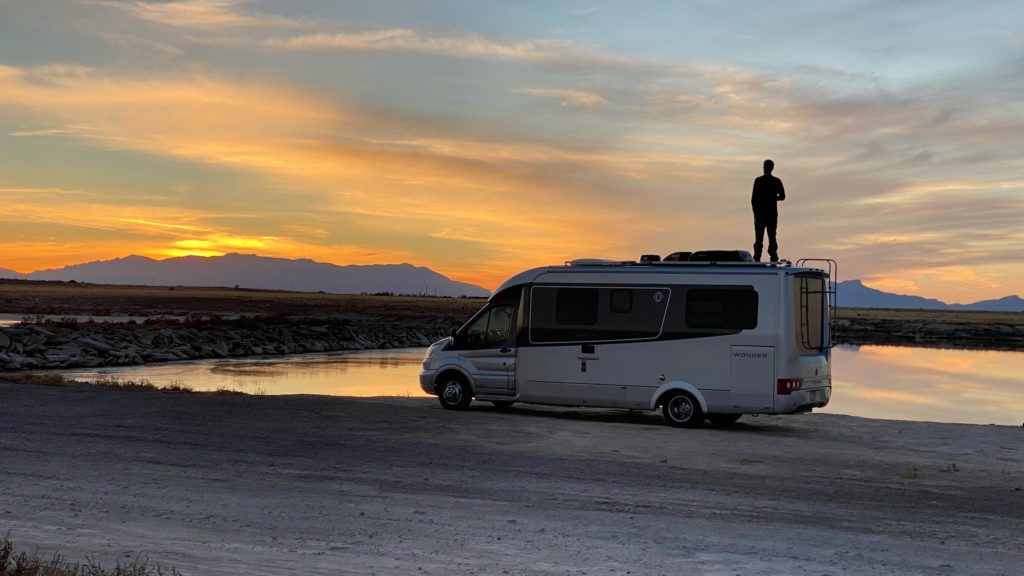
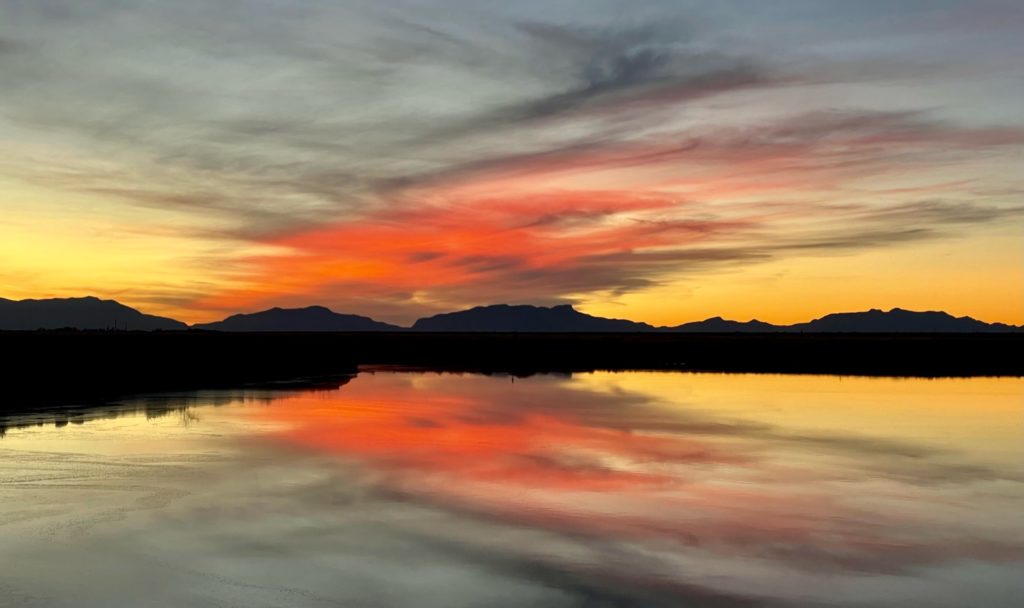
Sunset
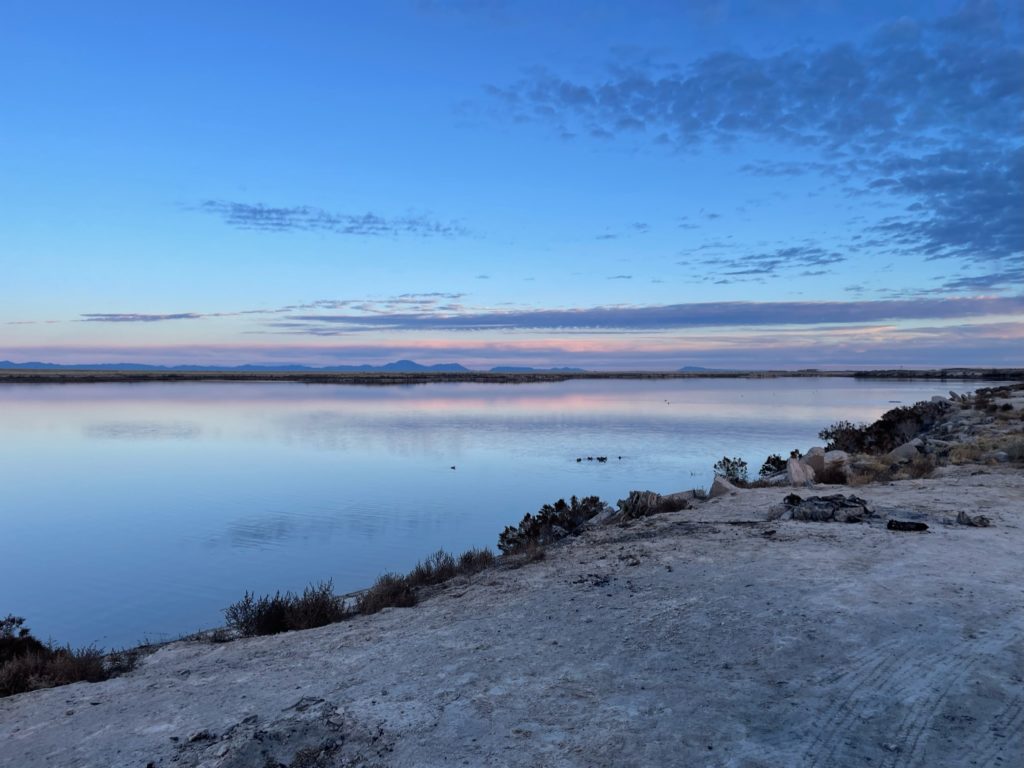
Sunrise
From the ecosystem to the animals and our boondocking spot, this natural wonder was one-of-a-kind.


